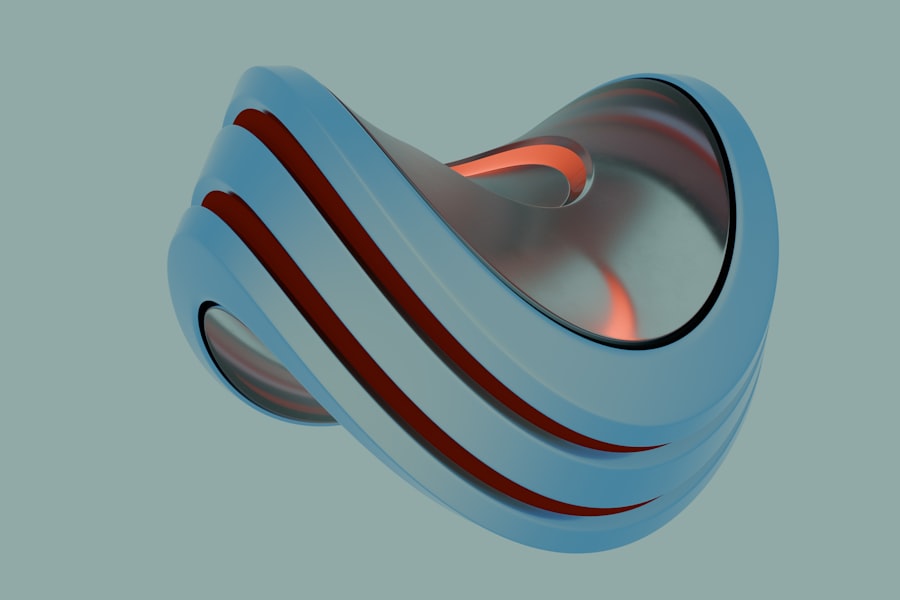The history of Hellmuth Walter’s peroxide propulsion technology is a fascinating journey that intertwines innovation, military necessity, and the quest for efficient propulsion systems. Hellmuth Walter, a German engineer, began his work in the early 20th century, focusing on the development of advanced propulsion methods. His interest in hydrogen peroxide as a propellant stemmed from its potential to provide a high-energy output while being relatively easy to handle compared to other fuels.
The early experiments conducted by Walter laid the groundwork for what would become a significant advancement in rocket and jet propulsion. During World War II, the urgency for effective propulsion systems led to increased interest in Walter’s work. The German military recognized the potential of hydrogen peroxide as a propellant for various applications, including submarines and aircraft.
His contributions during this period not only showcased the viability of peroxide propulsion but also highlighted the importance of innovation in wartime technology. As the war progressed, Walter’s work gained recognition, leading to further advancements and applications in the post-war era.
Key Takeaways
- Hellmuth Walter Peroxide Propulsion has a rich history dating back to the 1930s, with significant developments during World War II.
- The science behind peroxide propulsion involves the decomposition of high-concentration hydrogen peroxide to produce high-temperature steam and oxygen, which is used to drive a turbine or rocket engine.
- Advantages of peroxide propulsion include simplicity, high energy density, and the ability to use it as a monopropellant, while disadvantages include safety concerns and the need for high-purity hydrogen peroxide.
- Peroxide propulsion has applications in aviation, including rocket planes, missiles, and unmanned aerial vehicles, due to its high power-to-weight ratio and simplicity.
- The environmental impact of peroxide propulsion is relatively low, as it produces water and oxygen as byproducts, but safety considerations and limitations pose challenges for its widespread use.
The Science Behind Peroxide Propulsion
At the core of peroxide propulsion lies the chemical properties of hydrogen peroxide (H2O2). This compound is known for its ability to decompose exothermically into water and oxygen when catalyzed, releasing a significant amount of energy in the process. This reaction can be harnessed to produce thrust, making hydrogen peroxide an attractive option for propulsion systems.
The decomposition can be accelerated using catalysts such as silver or manganese dioxide, which enhances the efficiency of the reaction and maximizes thrust output. The science behind peroxide propulsion is not only rooted in chemistry but also involves principles of thermodynamics and fluid dynamics. When hydrogen peroxide decomposes, it generates high-pressure steam and oxygen, which can be expelled through a nozzle to create thrust.
This process is similar to traditional rocket propulsion but offers distinct advantages due to the relatively low toxicity and ease of handling associated with hydrogen peroxide compared to other propellants like hydrazine. The ability to achieve high thrust levels with a simpler chemical process makes peroxide propulsion an appealing choice for various applications.
Advantages and Disadvantages of Peroxide Propulsion

Peroxide propulsion presents several advantages that make it an attractive option for various applications. One of the most significant benefits is its high energy density, which allows for powerful thrust generation without requiring large quantities of fuel. Additionally, hydrogen peroxide is less toxic than many conventional rocket fuels, making it safer for handling and storage.
This characteristic is particularly advantageous in military and aerospace applications where safety is paramount. Furthermore, the simplicity of the propulsion system, which often requires fewer components than traditional engines, can lead to reduced maintenance costs and increased reliability. However, despite its advantages, peroxide propulsion also has its drawbacks.
One notable disadvantage is the stability of hydrogen peroxide; while it is less toxic, it can still be hazardous if not handled properly. Concentrated hydrogen peroxide can be corrosive and poses risks if it comes into contact with organic materials or certain metals. Additionally, while peroxide propulsion systems can achieve high thrust levels, they may not provide the same efficiency or performance as some advanced liquid rocket engines that utilize more complex propellants.
These limitations necessitate careful consideration when evaluating the suitability of peroxide propulsion for specific applications.
Applications of Peroxide Propulsion in Aviation
| Application | Metric | Value |
|---|---|---|
| Spacecraft propulsion | Specific impulse | 300-320 seconds |
| Aircraft emergency power | Duration | 10-15 minutes |
| Missile propulsion | Thrust | Up to 5000 lbf |
The applications of peroxide propulsion in aviation are diverse and have evolved over time. One of the most notable uses has been in rocket-assisted takeoff systems for aircraft. By utilizing hydrogen peroxide as a propellant, these systems can provide additional thrust during takeoff, allowing heavier aircraft to achieve flight more efficiently.
This technology has been particularly beneficial for military aircraft that require rapid deployment and enhanced performance under challenging conditions. In addition to military applications, peroxide propulsion has also found its place in experimental aviation projects. Various research organizations and aerospace companies have explored the potential of hydrogen peroxide as a green alternative to traditional aviation fuels.
The ability to produce thrust with fewer environmental impacts aligns with the growing emphasis on sustainability within the aviation industry. As researchers continue to investigate innovative ways to integrate peroxide propulsion into existing aircraft designs, the potential for new applications remains promising.
The Environmental Impact of Peroxide Propulsion
The environmental impact of peroxide propulsion is an increasingly important consideration in today’s world, where sustainability is a priority across industries. Hydrogen peroxide decomposes into water and oxygen, resulting in minimal harmful emissions compared to conventional fossil fuels used in aviation and space travel. This characteristic positions peroxide propulsion as a more environmentally friendly alternative, particularly in an era where reducing carbon footprints is essential.
Moreover, the use of hydrogen peroxide can contribute to cleaner air quality by minimizing pollutants associated with traditional combustion processes. As aviation continues to face scrutiny regarding its environmental impact, the adoption of greener technologies like peroxide propulsion could play a crucial role in mitigating these concerns. However, it is essential to balance these benefits with considerations regarding the production and transportation of hydrogen peroxide itself, ensuring that its lifecycle remains sustainable.
Challenges and Limitations of Peroxide Propulsion Technology

Despite its potential advantages, peroxide propulsion technology faces several challenges and limitations that must be addressed for broader adoption. One significant challenge is the production and storage of concentrated hydrogen peroxide.
Developing safe storage solutions and handling protocols is crucial to ensure that peroxide propulsion systems can be utilized effectively without compromising safety. Another limitation lies in the performance characteristics of peroxide propulsion compared to more established technologies. While hydrogen peroxide can generate substantial thrust, it may not match the efficiency or specific impulse offered by advanced liquid rocket engines using more complex propellants.
This performance gap can hinder its competitiveness in certain applications where maximum efficiency is paramount. Ongoing research and development efforts are necessary to enhance the performance capabilities of peroxide propulsion systems and address these limitations.
The Future of Peroxide Propulsion
The future of peroxide propulsion appears promising as researchers and engineers continue to explore its potential across various sectors. With increasing interest in sustainable technologies and greener alternatives to traditional fuels, hydrogen peroxide’s unique properties position it as a viable candidate for future propulsion systems. Ongoing advancements in materials science and engineering may lead to improved designs that enhance performance while maintaining safety standards.
Moreover, as space exploration initiatives expand and commercial space travel becomes more prevalent, there may be renewed interest in alternative propulsion methods like peroxide systems. The ability to achieve high thrust levels with reduced environmental impact aligns with the goals of many space agencies and private companies seeking to minimize their ecological footprint while exploring new frontiers. As innovation continues to drive progress in this field, the future landscape of peroxide propulsion could be marked by exciting developments and applications.
Safety Considerations for Peroxide Propulsion Systems
Safety considerations are paramount when dealing with any form of propulsion technology, and peroxide propulsion is no exception. While hydrogen peroxide is less toxic than many conventional fuels, concentrated forms can still pose risks if mishandled or improperly stored. Ensuring that personnel involved in handling and operating peroxide propulsion systems are adequately trained is essential for minimizing accidents and ensuring safe operations.
Additionally, developing robust safety protocols for storage and transportation is critical to prevent incidents related to spills or leaks. Research into safer catalysts and materials that can withstand the corrosive nature of hydrogen peroxide will also contribute to enhancing safety standards within this field. By prioritizing safety measures alongside technological advancements, stakeholders can foster confidence in peroxide propulsion systems while promoting their adoption across various applications.
Innovations and Developments in Peroxide Propulsion
Innovations in peroxide propulsion technology are continually emerging as researchers seek to enhance its performance and broaden its applications. Recent developments have focused on improving catalyst efficiency to maximize thrust output while minimizing reaction times during decomposition. Advances in materials science have also led to the creation of more resilient components capable of withstanding the harsh conditions associated with high-pressure environments.
Furthermore, interdisciplinary collaborations between chemists, engineers, and aerospace experts are driving progress in this field. By combining expertise from various domains, researchers are exploring novel approaches to integrate peroxide propulsion into existing systems while addressing challenges related to safety and efficiency. As these innovations unfold, they hold the potential to reshape the landscape of propulsion technology and expand the possibilities for future applications.
Comparing Peroxide Propulsion to Other Propulsion Technologies
When comparing peroxide propulsion to other technologies, several factors come into play that highlight its unique characteristics and potential advantages. Traditional liquid rocket engines often utilize complex propellants that offer high specific impulse but come with increased toxicity and handling challenges. In contrast, hydrogen peroxide provides a simpler alternative that balances performance with safety considerations.
Additionally, solid rocket propellants are known for their reliability but lack the flexibility offered by liquid systems like those utilizing hydrogen peroxide. The ability to throttle or shut down liquid engines provides operational advantages that solid propellants cannot match. While each technology has its strengths and weaknesses, peroxide propulsion stands out as a compelling option that combines efficiency with reduced environmental impact.
The Role of Hellmuth Walter in Advancing Peroxide Propulsion
Hellmuth Walter’s contributions to advancing peroxide propulsion cannot be overstated. His pioneering work laid the foundation for understanding how hydrogen peroxide could be effectively utilized as a propellant across various applications. Walter’s innovative designs during World War II demonstrated the practical viability of this technology, influencing subsequent developments in both military and civilian aerospace sectors.
Walter’s legacy continues to inspire researchers today as they explore new frontiers in propulsion technology. His vision for harnessing hydrogen peroxide’s potential has paved the way for ongoing advancements that seek to improve performance while prioritizing safety and environmental sustainability. As interest in alternative fuels grows within the aerospace industry, Hellmuth Walter’s influence remains a guiding force behind efforts to innovate and expand the possibilities of peroxide propulsion systems.
Hellmuth Walter was a pioneering engineer known for his work on peroxide propulsion systems, which played a significant role in the development of advanced propulsion technologies during World War II. For those interested in exploring more about the historical context and technological advancements of that era, a related article can be found on the website “In The War Room.” This article delves into various wartime innovations and their impact on modern engineering. You can read more about these fascinating developments by visiting the article on their website through this link.
WATCH THIS! America’s Nuclear Navy Was Born From Espionage
FAQs
What is Hellmuth Walter peroxide propulsion?
Hellmuth Walter peroxide propulsion is a type of rocket propulsion system that uses high-concentration hydrogen peroxide as a monopropellant. It was developed by German engineer Hellmuth Walter during World War II.
How does Hellmuth Walter peroxide propulsion work?
In a Hellmuth Walter peroxide propulsion system, the hydrogen peroxide is decomposed into steam and oxygen by a catalyst, which then expands through a rocket nozzle to produce thrust. This process is exothermic, meaning it releases heat, and can be used to power both rocket engines and gas turbines.
What are the advantages of Hellmuth Walter peroxide propulsion?
Hellmuth Walter peroxide propulsion offers several advantages, including simplicity, high energy density, and the ability to be stored as a stable liquid. It also produces a clean exhaust, making it environmentally friendly compared to other rocket propellants.
What are the limitations of Hellmuth Walter peroxide propulsion?
One of the main limitations of Hellmuth Walter peroxide propulsion is the high reactivity and potential hazards associated with handling high-concentration hydrogen peroxide. Additionally, the catalyst used in the decomposition process can degrade over time, requiring maintenance and replacement.
Where is Hellmuth Walter peroxide propulsion used?
Hellmuth Walter peroxide propulsion has been used in various applications, including the propulsion systems of German World War II submarines and the Messerschmitt Me 163 Komet, a rocket-powered fighter aircraft. It has also been considered for use in space exploration and satellite propulsion systems.




